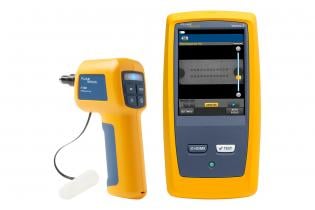High-quality ofda solutions deliver precise fibre testing and consistent results.
Checking Out the Advantages of Optical Fiber Checking for Improved Communication Equipments
The importance of optical fibre screening in contemporary interaction systems can not be overstated, as it acts as a structure for making sure network reliability and efficiency. Utilizing innovative approaches such as Optical Time-Domain Reflectometry (OTDR) and insertion loss analysis, companies can not only identify faults however also maximize their setups. This proactive testing strategy has profound effects for signal quality and functional efficiency, increasing the question of exactly how these techniques add to long-lasting sustainability in an ever-evolving technical landscape. Understanding these characteristics is important for stakeholders intending to keep a competitive side.
Value of Optical Fiber Screening
The importance of optical fibre testing can not be overemphasized in today's data-driven setting. As companies increasingly depend on high-speed information transmission for day-to-day operations, the integrity and efficiency of optical fiber networks are vital. Checking makes sure that these networks can sustain the large amounts of information produced and transferred flawlessly, cultivating reliable interaction and connection.
Optical fiber screening offers numerous critical features, consisting of validating installment quality, identifying prospective mistakes, and identifying total system performance. Routine screening can protect against expensive downtimes and service disturbances, permitting companies to preserve functional continuity. It helps in compliance with industry criteria and guidelines, guaranteeing that fibre optic installments satisfy required specifications for safety and security and dependability.
Additionally, screening can enhance the longevity of fiber optic systems. By proactively determining issues such as signal loss, depletion, or connector failings, organizations can address troubles before they rise, therefore extending the life of their infrastructure. In recap, optical fiber screening is not merely a technological requirement yet a calculated investment that improves network reliability, maximizes performance, and ultimately supports the growth and efficiency of contemporary communication systems.
Secret Testing Techniques

OTDR is a crucial strategy used to determine mistakes, action splice losses, and evaluate the general honesty of a fiber optic link. By sending a pulse of light down the fibre and examining the mirrored light, specialists can identify areas of mistakes and evaluate the network's performance over fars away.
Insertion loss testing measures the amount of signal loss that happens when light go through a link or splice. This approach is crucial for validating that links satisfy specified loss limits, which is vital for keeping optimum performance in communication systems.
Optical return loss testing quantifies the amount of light reflected back towards the resource as a result of blemishes in the fiber or connections. High return loss values indicate much better performance and minimized signal destruction.
Together, these testing methods offer an extensive analysis of fibre optic networks, guaranteeing their integrity and capability in varied communication applications.
Effect On System Performance
Effective optical fiber screening directly influences the overall efficiency of interaction systems. By making sure the stability of fibre optic cables, screening recognizes prospective faults such as depletion, splice loss, and port misalignment. These issues can significantly weaken signal top quality, leading to disturbances and decreased information transmission rates.

In addition, routine optical fiber testing adds to long-lasting system sustainability. It makes it possible for early discovery of damage, enabling prompt upkeep and upgrades before significant failings happen. This not just prolongs the life expectancy of the framework yet additionally guarantees that interaction systems remain competitive in regards to efficiency.
Cost-Effectiveness and Efficiency
Cost-effectiveness is a critical consideration in the implementation and upkeep of optical fibre networks. Carrying out durable optical fibre testing treatments can significantly decrease functional expenses by determining problems prior to they escalate into significant problems. robotic vision. By detecting faults, depletion, and various other efficiency hindrances early, organizations can avoid costly repair services and downtime, which can interfere with solutions and bring about revenue loss
Additionally, effective testing techniques enhance the setup procedure, enabling specialists to work extra successfully. This translates to decrease labour costs and faster task visit our website conclusion times. Advanced testing tools, such as Optical Time Domain Reflectometers (OTDRs), makes it possible for an exact assessment of fibre top quality, making sure that only ideal materials are utilized, thereby decreasing waste.
Regular screening also adds to better source allotment. By recognizing the network's performance, companies can make informed choices about upgrades and growths, making certain that investments are made where they are most required. In summary, optical fiber screening enhances cost-effectiveness and effectiveness, sustaining the long-lasting sustainability and competition of interaction systems in a progressively requiring market.
Guaranteeing Long-Term Dependability
Implementing extensive optical fiber screening not only improves price financial savings and operational effectiveness yet also plays a critical function in making certain the long-term dependability of interaction networks. Consistent testing methods, consisting of depletion and transmission capacity assessments, assistance determine possible destruction in fibre performance before it results in solution disturbances.
By using advanced testing methodologies, network drivers can determine faults or weaknesses in the fibre infrastructure, enabling for timely remediation. This positive technique lessens downtime, making certain that interaction systems continue to be useful and effective. In addition, normal screening adds to the growth of an extra durable network, as operators can adapt and optimize their framework based upon real-time information understandings. fibre testing equipment.
Furthermore, guaranteeing compliance with sector criteria via optical fibre testing reinforces the top quality and stability of the web entire communication system. This adherence not just reinforces self-confidence amongst stakeholders yet additionally aligns with regulatory needs, which are significantly strict.
Conclusion
In conclusion, optical fiber testing serves as a fundamental part in boosting interaction systems. By utilizing numerous testing methods, such as OTDR and insertion loss evaluations, networks can accomplish optimum performance and reliability.